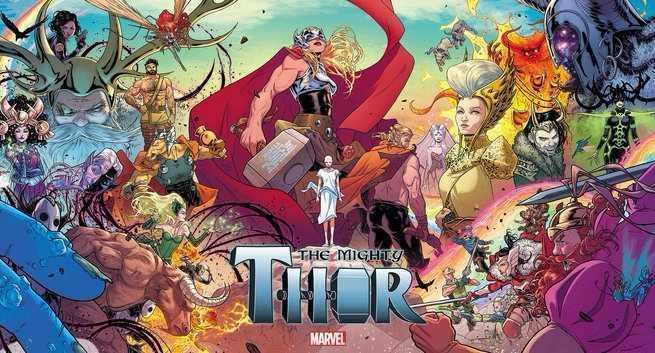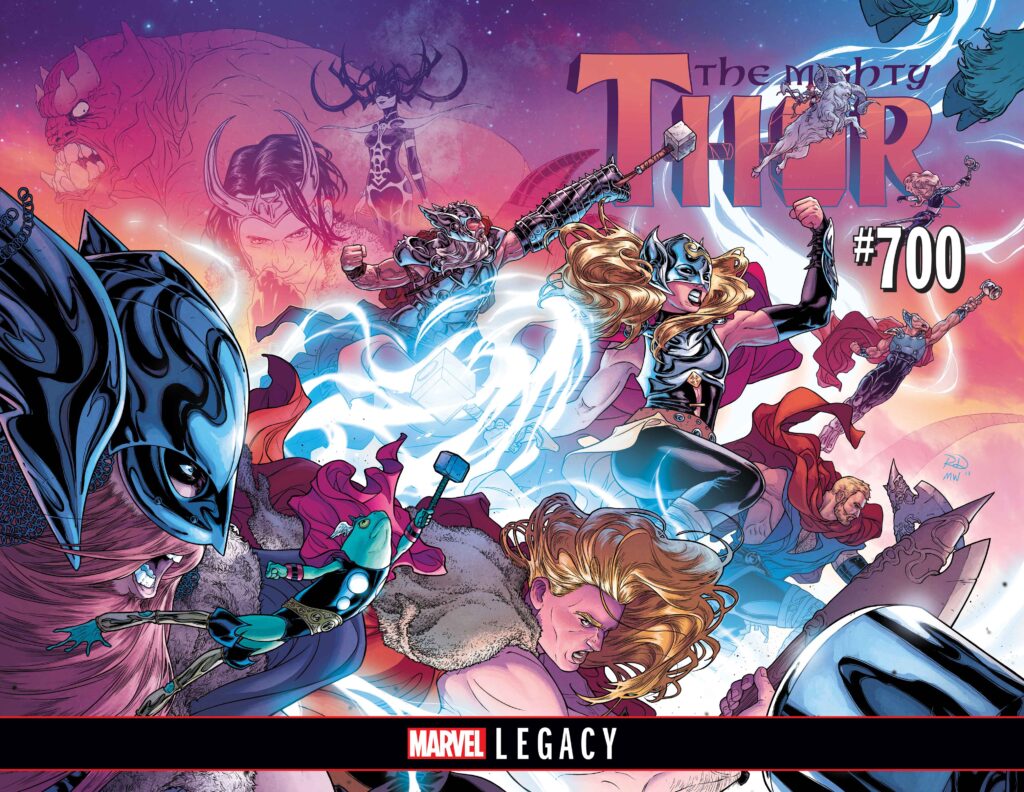The second half of this blog contains details of plot elements that were picked up for use in the new Thor: Love and Thunder movie, and so could be considered spoilers (even though they are revealed relatively early on).
I was a big fan of Jason Aaron’s opening Thor God of Thunder arc from 2013, and was pretty delighted with the fresh dose of fantasy, action and wit that had been injected into the character; so I’ll admit I was pretty miffed in 2014 when the very same writer followed up that run by abruptly stripping Thor Odinson of his trademark title and weapon, Mjolnir, and passing them on to a newcomer. It didn’t really matter that the successor was a girl; but fans did brustle that the twist came out of the blue, and in fact occurred in an entirely separate title; the company-wide crossover miniseries Original Sin.

So I didn’t immediately pick up the 8-part run published that year, titled simply Thor; but I’m glad I went back soon afterwards to scoop up the issues before they got too costly. It was unfair of me to compare this run to the seminal God of Thunder; this is very much it’s own beast, with it’s own set of merits. Although the identity of the new Thor is a mystery throughout; her inner monologue is written to be a very likeable underdog hero, and it’s a pleasure to discover her new powers alongside her, as she is thrust quickly into her first adventure.

Although not required reading; you may find it useful beforehand to have read Aaron’s previous two arcs under the God of Thunder run, The Accursed and The Last Days of Midgard. These may not be classic storylines in and of themselves, but they are solid reads and are noteworthy for respectively introducing the villainous Dark Elf Malekith (baddie in Marvel movie Thor the Dark World) and even more villainous Dario Agger (CEO of multinational corporation ROXXON). The conflict between these two baddies is the plot driver for the new Thor’s first appearance, and Aaron has a lot fun with the interplay of these two antagonists.
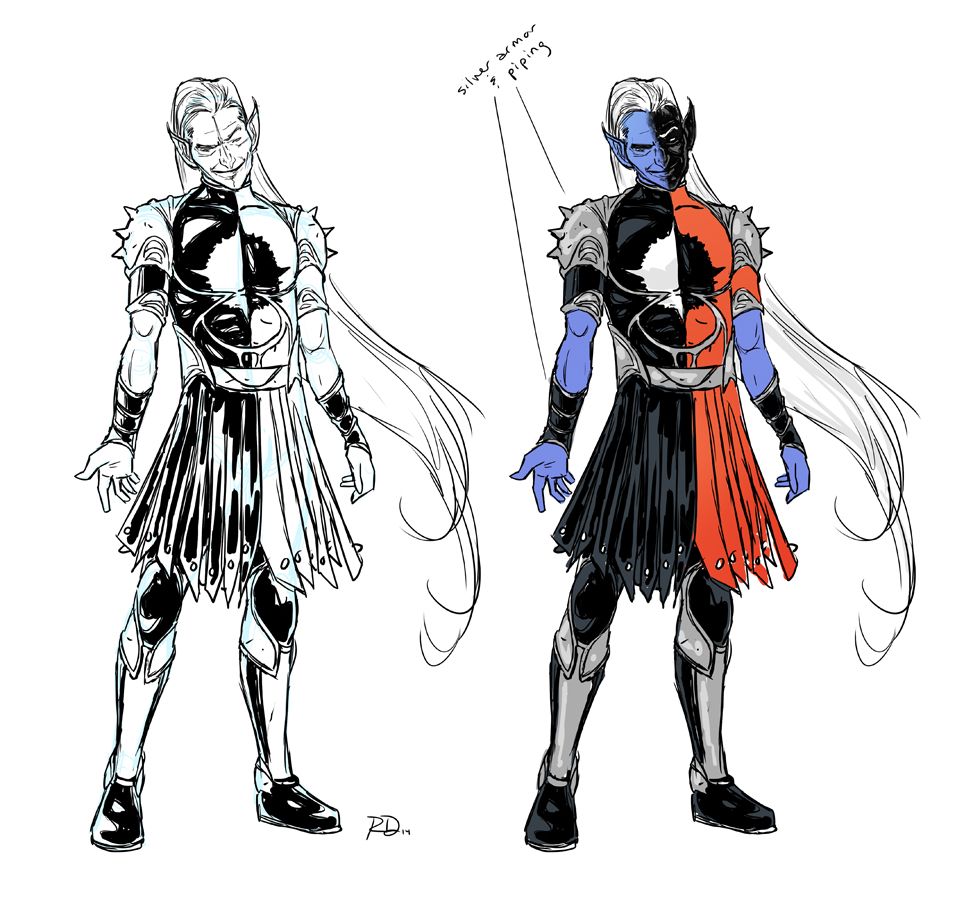
In fact, Aaron’s plot moves along at a cracking pace; over just 8 issues of the first arc the Mighty Thor squares off against several of Thor’s classic foes in some spectacular action sequences. But the real hook is the b-plot, which sees Thor Odinson (now the Unworthy Thor) try to track down the real identity of the new Goddess of Thunder. Even on repeated readings, there’s a lot of fun to be had with the various red herrings that Aaron throws into the mix. When the reveal finally comes, it’s on the very last page of the final issue, and it’s a cracker of a twist.
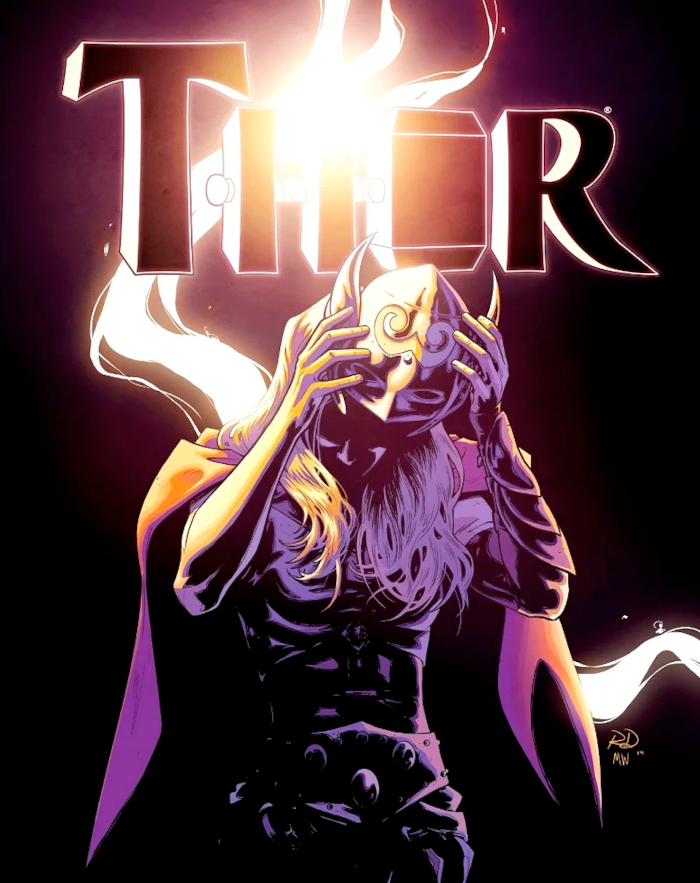
With the revelation that the alter-ego of the new Thor is in fact Jane Foster, Odinson’s previous earthly girlfriend; the character and storylines were relaunched for a third time by Jason Aaron in 2016 as The Mighty Thor. This was now a lengthier run (30 issues in total) which placed Foster’s Thor front and centre, following her continued journey to understand her powers and establish her place in the Asgardian universe. It’s a fun series of stories which will not disappoint fans of fantasy and action; although I would suggest that the overarching storyline works hardest to set pieces in place for Aaron’s 2019 mega-event War of Realms; which really sits outside the scope of this Thor iteration. In fact, if I was to recommend one arc in particular to read, it would be Jane Foster’s closing chapter from 2018, titled (spoilers) Death of The Mighty Thor.
Arguably the most effective hook of Aaron’s reinvention of the character is that in her alter-ego of Jane Foster, she is suffering from advanced stages of cancer, and even though she is undergoing painful chemotherapy, every time she transforms back into The Mighty Thor, the medication is flushed from her body and the cancer progresses. It’s a ticking bomb plot device that added an extra layer of selflessness to the hero, and of tragedy to her overall arc. A controversial topic, but it is pulled off in large part by Aaron’s artistic collaborator for the majority of the Jane Foster era, Russell Dauterman.
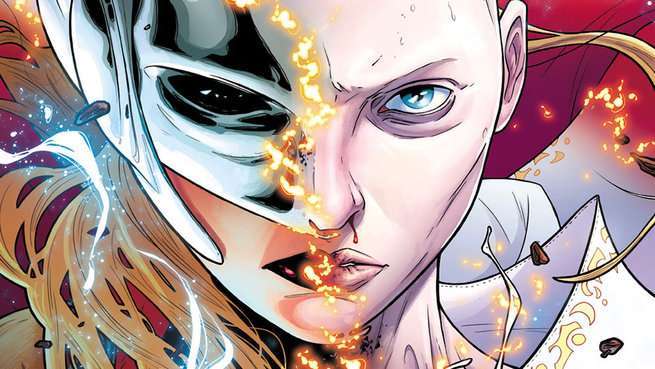
Dauterman’s artwork is rooted in simple and distinct linework, coupled with kinetic and unpredictable page layouts. With the strong colours (also by Dauterman), each individual picture has the appearance of an animated frame, but the overall reading experience is made much more thrilling and engaging as panels crash off each other on the page. This was particularly effective in the action-heavy final arc, which began in the anniversary issue Mighty Thor #700 and continues through to #706 (in reality #24 to #30).
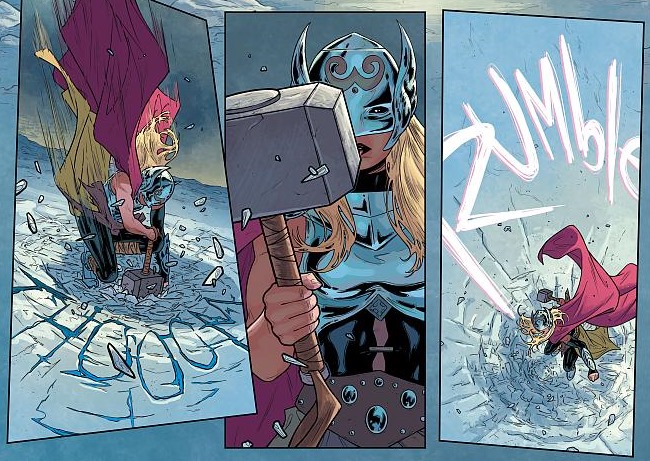
Dauterman’s characterisation of the Mighty Thor is powerful yet elegant, while Jane Foster is frail but strong-willed. This really comes into play in The Death of Mighty Thor, which sees a furious magical monster, The Mangog, on a destructive rampage through Asgard; only The Mighty Thor has the power to stop it, but with her cancer in it’s final stages, Jane Foster knows that a final transformation will come with a terrible price. This effectively hits the same story beats as The Death of Superman from 1993, but with a different monster and setting. The critical distinction being that when Superman perished at the hands of Doomsday, it was a stunt by DC to bump the readership of the title, and we knew that hero would be back in a few short months. In this case, the final fate of Jane Foster marks the end of her arc, and it plays out with all the hope and heartbreak of seeing a loved one fight for their life.
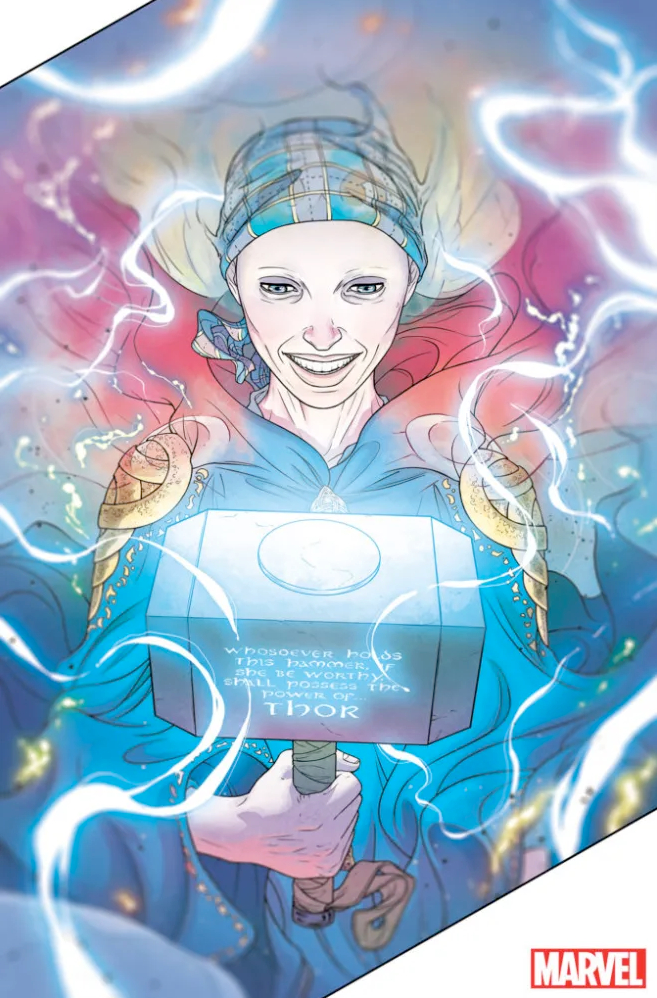
No one really dies forever in comics, and certainly not when they’re as popular with fans as Jane Foster. But in and of itself, Jason Aaron and Russell Dauterman’s run of Thor and The Mighty Thor introduced a character that was both new and familiar, saw her story through to a conclusion which stayed true to her origin, and yet was also delightfully magical and unexpected all along the way. If you are looking for a comic to devote your time and attention to, I’d say that The Goddess of Thunder is definitely worthy.
